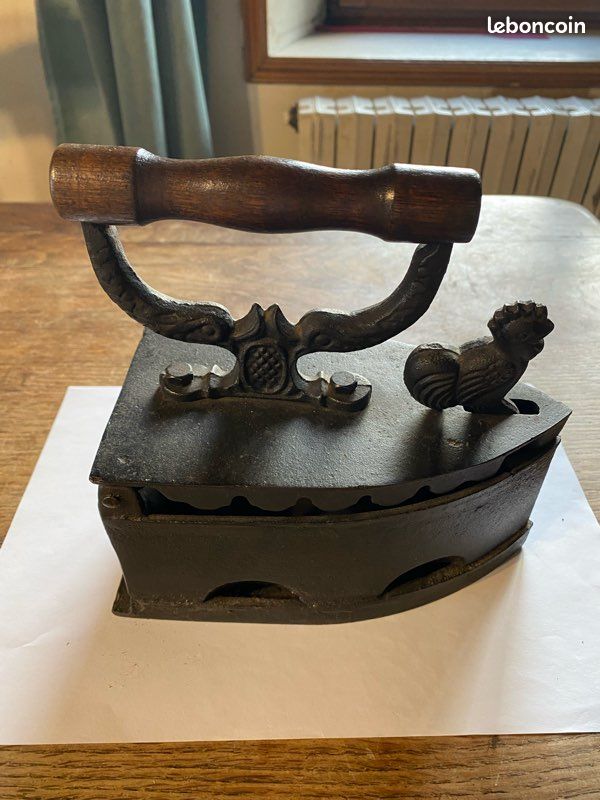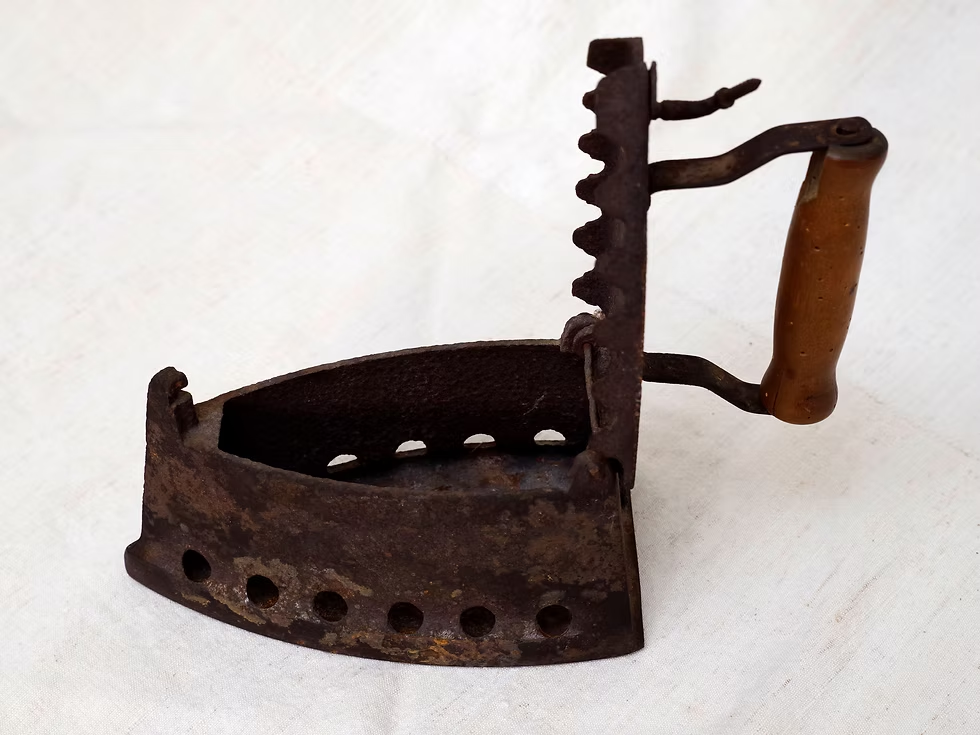It’s small, heavy, and shaped like something pulled from a blacksmith’s forge. Topped with a carved wooden handle and a tiny rooster figurine, it once sat proudly in households across the world. Younger generations often mistake it for a strange sculpture or even a doorstop, unaware of the role it played in everyday life. What they don’t realize is that this mysterious object was once an essential tool… for ironing clothes.

The Charcoal Iron: A Glimpse Into the Past
Before sleek electric irons became common in every household, people relied on a much heavier and more hands-on tool — the charcoal iron, sometimes called a coal iron or box iron.
How It Worked
These irons were made of cast iron and had a hollow interior. Hot charcoal or embers were placed inside through a small door, and the heat from the coals would warm the metal base. The wooden handle protected hands from burns while ironing. A small latch, often shaped like a rooster or another figure, locked the lid in place.
Why It Was Used
Charcoal irons were widely used in the 19th and early 20th centuries, especially in rural areas or before electricity became available. They produced consistent heat and could be reheated by adding more coals. However, they were also very heavy, often weighing over 5 kg, and required skill to use safely.

A Symbol of Household Heritage
Today, charcoal irons are seen as antiques and collectibles. They stand as a reminder of the ingenuity and resilience of past generations, when laundry was done without the convenience of electricity.
According to the Smithsonian Institution and the Science Museum Group (UK), various models of charcoal irons were used around the world from the 1800s through the early 1900s, gradually disappearing as electric irons spread.